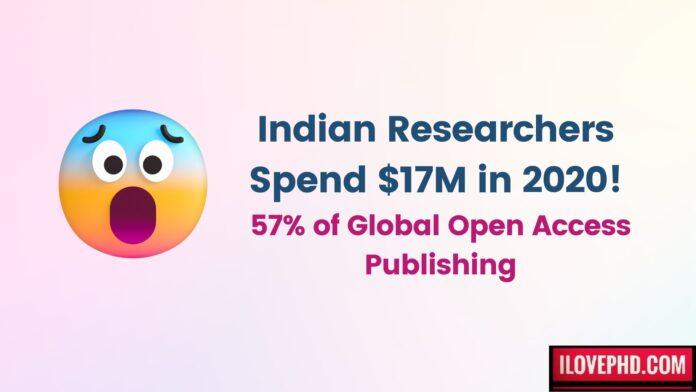In a groundbreaking study conducted by researchers from IIM-Ahmedabad and IMU Kolkata, it has been revealed that Indian researchers shelled out a staggering $17 million in 2020 to publish their research articles in open-access formats. This amount constitutes a significant 57% of the global total spent on article processing charges (APCs) that year.
Indian Researchers Invested $17 Million in Open Access Publishing in 2020
1. The Global Scenario
Globally, over $30 million was allocated for APCs in 2020, with more than half of this expenditure coming from Indian researchers. Commercial publishers, including MDPI, Springer Nature, and Elsevier, received over 80% of this hefty sum.
2. The Need for Change:
The study emphasizes the urgent need for the development of a national open-access repository for Indian researchers. It also underscores the necessity of a nationwide open-access policy to facilitate the publication of funded research. The researchers propose the establishment of a framework to support the growth of Indian open-access journals.
3. Diverse Spending Patterns
The study delves into the diverse spending patterns across scientific fields. Health and medical sciences researchers topped the charts, spending $7 million on APCs, followed by life and earth sciences, multidisciplinary studies, and chemistry and materials science. In contrast, humanities, literature, arts, social sciences, business, economics, and management categories accounted for comparatively lower APCs.
4. Challenges for Low-Income Countries
While open-access journals aim to ensure equitable access to scholarly publications, the study highlights the challenges faced by low-income countries. High processing charges, especially prevalent in the Global North, act as a significant obstacle for researchers from economically challenged regions.
5. Commercial Dominance
Despite the initial goal of open-access journals to prevent commercialization, the study reveals that established publishers have positioned themselves in this landscape. In 2020, a striking 81% of APCs paid by Indian researchers went to commercial publishers, leaving only around 5% for Indian publishers.
6. Lack of Systemic Support:
Indian researchers face challenges due to the absence of a dedicated funding system for open-access publications. The study points out that existing policies from funding agencies need updating to align with the evolving landscape of open-access journals.
The findings of this study shed light on the substantial financial contributions made by Indian researchers to open-access publishing. As the call for a national open access policy grows louder, addressing the systemic challenges and ensuring equitable access becomes imperative for the future of academic research in India.

